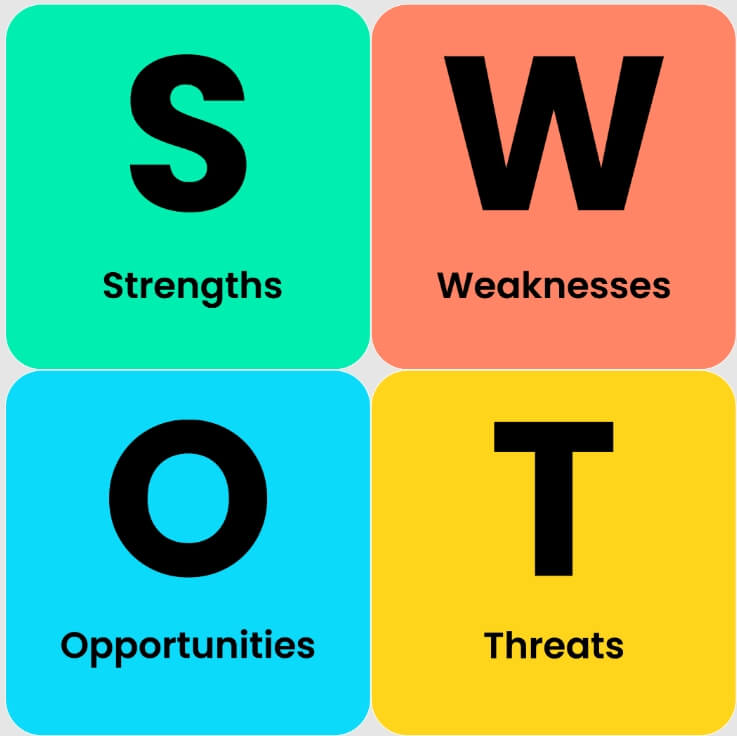Explore how product managers can deepen their understanding of users, enhance their product insight, and design user-centric solutions. Learn about user characteristics, the importance of empathy, and key strategies for creating valuable products.
"Put the user at the center" — this is a phrase that most product managers hear when they first enter the field and are often expected to follow. However, in daily work, few can truly live up to this expectation. The underlying issue is a lack of insight and understanding of users. In this article, let's explore how the author addresses this issue.

In recent years, I have been involved in product design focused on markets and users, so researching and understanding users has become a critical part of my daily work.
As my years of experience grow, I have developed some of my own thoughts on users, which I would like to share again through this article.
In recent years, the roles within the internet industry have become increasingly specialized. Some product roles, such as back-office products or internal IT products, may not require much focus on users. Therefore, the "users" discussed here are those for products aimed at markets and consumer services, and these users are crucial to focus on.
1. Insight is Based on User Understanding
When mentoring new colleagues, I found that some have strong insights and can immediately identify deeper issues.
This made us think, can we summarize a set of product methodologies to improve the team’s overall business insight?
However, after several one-on-one coaching sessions and practical exercises, we realized that insight is hard to transfer between individuals.
It seems that no matter how much we try, one person cannot easily learn another person’s insight. Even if we guide a new colleague in understanding the requirements and help them complete a task, they will still be unsure of how to approach the same problem next time.
After some discussion, the team concluded that insight is actually non-replicable. It does not belong to the category of rapidly transferable methodologies, and cannot be learned in just one or two coaching sessions. Insight reflects the understanding of users, and its core lies in user cognition. The level of cognition essentially reflects the difference in how deeply we understand users.
This is why, when we debate an issue, if the discussion reaches the user’s original intention or the scenario, our team leader will call a halt — because cognition issues cannot be resolved through discussion alone.
Thus, possessing insight provides an opportunity to seize the market. Insight is often one of the key indicators of a product manager’s ability.
So, how can we improve our insight? The level of insight is determined by our understanding of users. Only with a deep understanding of users can we identify their real needs in specific scenarios and discover product opportunities.
Understanding users requires maintaining an open mind and studying them day after day — their characteristics, scenarios, and needs. Because user characteristics are dynamic, we must continuously research and nurture our understanding over time.
I have also seen some senior professionals or managers make decisions that don't meet expectations. This often happens when, after working for a long time, they become increasingly distanced from the users, losing sight of their original purpose and lacking an understanding of users and the market.
Therefore, regardless of position or seniority, we must be grounded and maintain a steady, persistent attitude in studying users. Only with this mindset and determination can insight become a core competency for product managers.
2. Studying User Characteristics
Users have many characteristics. With different business backgrounds, roles, and scenarios, these combinations can create thousands of tags. Here, I want to talk about the fundamentals of users.
Users Are People
Everyone has their own understanding of "users." Zhang Xiaolong says that the essence of a user is a person, Yu Jun says that users are a collection of needs, and some say that users are represented by data.
I personally do not agree with treating users as an abstract concept. If user research becomes too abstract, where users are seen as empty data points or concepts, after a few years of product work, you may become numb to your job, detached from users, and focused only on completing tasks without truly understanding the users.
When we design products, we must understand that behind these usage data are real, living individuals. We need to maintain a sense of reverence for users.
Once we lose this sense of reverence, we will end up over-designing. Products that lack respect for users will ultimately be abandoned by users.
Therefore, when we study users, we must first treat them as "people," as living and independent individuals.
Secondly, people are both animals and rational beings.
The animal nature refers to traits like greed, anger, ignorance, laziness, and stupidity — tendencies that help humanity survive natural disasters over thousands of years.
Rationality, on the other hand, is what distinguishes humans from animals. Through rational thinking, we can avoid the shortsightedness of our animal instincts and think from a long-term and developmental perspective.
However, human reactions are always quicker in their animal nature than in rational thought. This animal nature has evolved over millions of years, while our rationality has only developed in the last tens of thousands of years.
Therefore, designing for human instincts makes users feel more comfortable. Many product designs, such as feedback blocks that make the experience smoother, are actually catering to these animal instincts.
Moreover, the animal nature helped humans survive in ancient times, but in today's society, these instincts can actually hinder our growth. In daily life, we need to restrain our animal nature and use rational thinking to make judgments and decisions.
Although rational responses take longer, they are more conducive to making long-term decisions that benefit development.
For some product designs that require persistence or self-control, we can also appeal to users' animal instincts to make learning more engaging or to guide them toward certain actions. For example, all games use quick feedback to lower the learning threshold.
Users Are Target Groups in Specific Scenarios
When we discuss users in product design, we are talking about target groups in specific scenarios.
Humans are complex, and the needs generated in different scenarios are not the same. For example, when making a phone call, our needs in the office and in a park are different.
In the office, we don’t want the microphone to be too loud to avoid colleagues hearing private information, while in the park, where the environment is noisy, we need the microphone to be louder to hear more clearly.
Therefore, user research cannot ignore specific scenarios.
Additionally, target groups are differentiated by various categories. A product can have multiple target groups, and different roles within the same group will have different needs in specific scenarios.
For example, in Tencent’s 8-Minute Product Course, there was a case about Tencent’s PC Manager: Through offline research, they segmented the target users based on different needs in specific scenarios and used that information to reconstruct the product, leading to user growth and the ability to break through barriers.
Target groups are not singular. We can segment them by age, role, gender, occupation, preferences, and more. By combining scenario and role tags, we can define the characteristics of our target users.
Once we identify our target group and core scenario, it will guide us in iterating and planning our product.
Users Are Lazy and Dumb
First of all, when I say that users are lazy and dumb, I don’t mean it in a derogatory way; it’s simply human nature — we avoid thinking when possible and avoid learning if we can.
Therefore, in product design, try not to design products that require users to think or learn, as this will increase their burden and lead to dissatisfaction or abandonment.
Additionally, people are subjective and random; their preferences change depending on scenarios, moods, etc.
So, we need to understand the commonalities of our target users while not halting designs just because of feedback from a few users, as individual preferences are uncontrollable.
We shouldn't just follow whatever users say — just because many people mention a feature, it doesn't necessarily mean we should implement it.
Finally, humans are stubborn. Once they form an opinion, they don’t like to change it. This stubbornness is driven by self-esteem. Many angry outbursts stem from wounded pride.
Therefore, try not to teach users or change core process flows casually unless it leads to clear improvement. Randomly changing the operational process could leave a bad impression on users.
The rise of domestic video websites also hits upon the "lazy and dumb" nature. In the past, watching TV shows and movies required either a TV or downloading a player. Some films even required separately downloading subtitles.
With the rise of mobile platforms, people now prefer video streaming websites like Tencent Video, iQIYI, and Youku, as they do not require downloading or learning how to download content.
As some people say, "Laziness is the primary driving force of technological progress."
3. Become the User
Whether in gathering requirements or understanding users, if we don’t experience things firsthand, there will inevitably be some distortion.
Thus, I believe that no amount of empathy can compare to actually putting yourself in the user’s shoes. Ultimately, the highest level of user research is to become the user.
This is relatively easier for B2C products, but more difficult for B2B products, as B2B typically requires simulating real business scenarios.
Our business previously served B2B merchants, and we found that merely conducting research didn’t give us a true understanding of their needs.
To simulate real business scenarios, we invested in opening a real store, where everyone took turns managing it. Through this, we discovered many unmet needs and came up with innovative product solutions that others hadn’t implemented.
The idea that "talking thousands of times online doesn't compare to doing it once in person" applies here.
4. Treat Users as True Friends
When designing products, product managers unconsciously inject their own emotions and perceptions into the design. Over time, the product increasingly resembles its creator.
In the past, I worked on tool-oriented products, where I focused solely on efficiency and function, without considering the user perspective.
Later, my team leader asked me to design a weather feature — something simple like displaying the temperature and weather in the top-left corner of the homepage.
I didn’t think this feature had any real value, nor was it aligned with the business context, so I initially rejected it.
Later, my team leader said, “Dou Nai, your designs are too tool-like. There’s no warmth, and it’s too distant from the user. If you keep going like this, you'll become a better craftsman, but not a better product designer. As product designers, we need to treat users as real friends. Only when we design with sincerity will users feel it and stick with us.”
At the time, I didn’t understand the value of that feature or agree with my team leader’s words. It wasn’t until years later that I realized that a product without warmth is just a tool. It’s like holding a cold hammer — when something better comes along, the user will throw the hammer away.
Only when we treat users as friends and add features with warmth will users truly feel the product's humanity, and our product will "come to life."
5. User Value = Efficiency + Experience
Product value = user value + business value. Yu Jun says a good product must be useful, profitable, and sustainable. Usefulness, which solves user problems, is user value.
User value can be divided into two aspects: efficiency and experience.
Efficiency could include work efficiency, process efficiency, life efficiency, management efficiency, etc.
For example, platforms like Xiaohongshu or Baidu that help users search for content more quickly, Meituan for faster restaurant searches, e-commerce platforms for quicker shopping, Pomodoro timers for better study efficiency, and communication tools like WeCom, Feishu, and DingTalk all create value by improving efficiency.
Experience includes emotional, interaction, and visual experiences.
For example, platforms like Douyin (TikTok) offer a more enjoyable video-watching experience, WeChat allows immediate communication, smartphone cameras offer clearer photos, and shower gels make people smell better, all contribute to enhancing daily experiences.
Therefore, users choose products based on user value. Only when users believe the value offered by a product is greater than that offered by other products or no product at all, will they choose our product.
Similarly, when designing products, we need to address both efficiency and experience. Only by thoroughly understanding these two aspects can we create products with real user value.
Weekly updates from WeCom notifying users of the hours spent or messages replied also remind users how much efficiency the product creates, strengthening the product's value in their minds.







